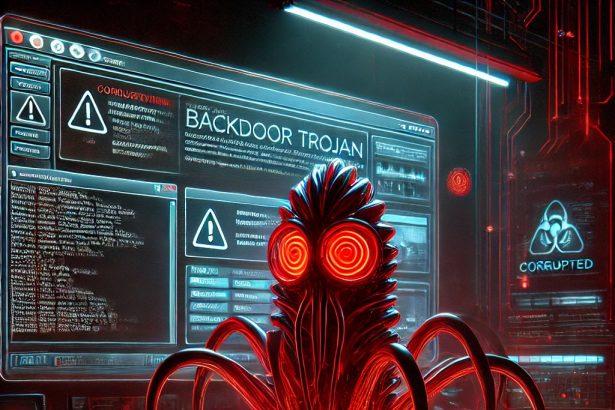Cybercriminals have upped their game with Behavior:Win32/Tofsee.ZZ, a stealthy Trojan horse that disguises itself as a legitimate Adobe Reader setup file. While it may appear harmless, this malware silently infiltrates your system, downloads more malicious files, and opens a backdoor for remote attackers. It’s not just a single threat—it’s a gateway to many.
Let’s break down what makes Behavior:Win32/Tofsee.ZZ so dangerous and how you can identify if your system has been infected.
What Is Behavior:Win32/Tofsee.ZZ?
Behavior:Win32/Tofsee.ZZ is a malware loader primarily used to install and run other malicious software like ransomware, spyware, and keyloggers. It often comes bundled with cracked software, pirated media, or is distributed via fake emails and shady download sites. Once active, it alters system files and registry settings to maintain a long-term presence while evading detection.
Threat Overview
| Category | Details |
|---|---|
| Threat Name | Behavior:Win32/Tofsee.ZZ |
| Type | Trojan Horse / Malware Loader |
| Symptoms of Infection | Slow performance, freezes, high CPU usage, unknown processes |
| Distribution Methods | Bundled downloads, spam emails, fake updates, malicious websites |
| Associated Emails | No specific addresses, but often comes via phishing or fake software emails |
| Detection Names | Win32/Tofsee.ZZ, Trojan:Win32/Tofsee, Trojan.GenericKD |
| Main Damage | Data theft, remote control access, installation of other malware |
| Concealment Tactics | Hidden files, registry tweaks, system-level persistence |
| Danger Level | ★★★★★ – Critical |
| Recommended Tool | SpyHunter |
How It Works
The Tofsee.ZZ Trojan often arrives under the guise of a trusted installation file—most commonly Adobe Reader updates. Once launched, it connects to a command-and-control (C2) server where hackers issue instructions in real time. These can include installing spyware, enabling remote access, or even launching DDoS attacks.
This malware also harvests sensitive personal information such as saved passwords, online banking credentials, and everything you type. It acts silently, giving no immediate sign of damage—until it’s too late.
Key Risks
- Data Theft: Collects and transmits personal and financial data.
- Remote Control: Hackers can operate your PC without your knowledge.
- System Instability: Freezes, performance drops, and crashes.
- Hidden Persistence: Uses advanced techniques to survive reboots and removal attempts.
Detection and Removal
If your system detects Behavior:Win32/Tofsee.ZZ, you should take immediate action. Manual removal is risky due to the malware’s persistence and hidden files. The safest route is to use a professional malware removal tool like SpyHunter, which can deeply scan your system and remove all hidden threats effectively.
Manual Removal of Trojan Malware
Important: Manual removal is not recommended for beginners. It involves interacting with system files and the Windows Registry, which, if done incorrectly, can lead to system issues.
Step 1: Restart in Safe Mode with Networking
Booting into Safe Mode disables unnecessary startup programs, including most malware.
- Press Windows + R, type
msconfig, and hit Enter. - In the System Configuration window, go to the Boot tab.
- Check Safe boot, then select Network.
- Click Apply and restart your computer.
Step 2: Terminate Malicious Processes
- Open Task Manager using Ctrl + Shift + Esc.
- Navigate to the Processes or Details tab.
- Identify any unusual or unrecognized processes. Be cautious—do not stop critical Windows processes.
- Right-click a suspicious process, choose Open File Location, then End Task.
- Delete the associated file from the opened folder.
Step 3: Delete Trojan Files
- Press Windows + R, type
%appdata%, and press Enter. - Check for any unknown folders created recently.
- Repeat the same for these directories:
%localappdata%C:\Program FilesC:\Program Files (x86)C:\Windows\Temp
- Delete any folders or executables related to the Trojan.
Step 4: Clean Up the Windows Registry
- Press Windows + R, type
regedit, and press Enter. - Go to these registry paths:
HKEY_LOCAL_MACHINE\SOFTWARE\Microsoft\Windows\CurrentVersion\RunHKEY_CURRENT_USER\SOFTWARE\Microsoft\Windows\CurrentVersion\Run
- Look for registry entries with unusual names or links to suspicious files.
- Right-click and delete the unwanted entries.
Tip: Back up your registry before making changes by clicking File > Export in the Registry Editor.
Step 5: Reset Your Web Browsers
Malicious Trojans often tamper with browser settings to redirect users to unwanted sites.
Chrome
- Settings > Reset and clean up > Restore settings to their original defaults.
Firefox
- Help > More Troubleshooting Information > Refresh Firefox.
Edge
- Settings > Reset settings > Restore settings to their default values.
Step 6: Perform a Full System Scan with Windows Defender
- Open Windows Security from the Start menu.
- Click Virus & threat protection > Scan options.
- Choose Full Scan and click Scan now.
Step 7: Update Windows
- Go to Settings > Windows Update.
- Click Check for updates and install all available patches.
Method 2: Automatically Remove Trojans Using SpyHunter
Manual removal can be effective, but it’s time-consuming and may leave hidden components behind. SpyHunter is a trusted malware removal tool that automatically detects and eliminates Trojans and other threats.
Step 1: Download SpyHunter
Use the official download link: Download SpyHunter
Follow these instructions for installation: SpyHunter Download Instructions
Step 2: Install the Program
- Locate the downloaded file, usually SpyHunter-Installer.exe.
- Double-click it and follow the on-screen steps to complete the installation.
- Launch SpyHunter when finished.
Step 3: Scan Your PC
- Click the Start Scan Now button on the SpyHunter dashboard.
- Allow the scan to complete (it may take several minutes).
- Review the detected items.
Step 4: Remove Threats
- Click Fix Threats.
- SpyHunter will quarantine and remove the detected Trojan files automatically.
Step 5: Restart Your PC
Once the cleanup is finished, restart your system to finalize the changes.
Trojan Prevention Tips
- Avoid downloading software from unofficial sources.
- Be wary of email attachments, even from known contacts.
- Keep Windows and applications updated with the latest patches.
- Use a reputable security program like SpyHunter for active malware protection.
Conclusion
Behavior:Win32/Tofsee.ZZ isn’t just another virus—it’s a full-blown backdoor to your personal data and system integrity. Whether it came through a fake email or a sketchy download, once it’s in, it opens the floodgates to more malware and potential identity theft.
Don’t wait for your system to crash or your accounts to be compromised. Use a trusted removal tool to get rid of this Trojan and safeguard your data now.




